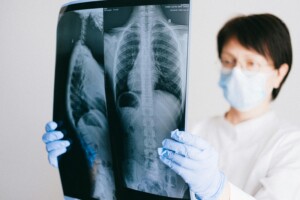In her article titled Kidney Stones on the Rise Among Children and Teens, health, and wellness practitioner Katie Camero discusses how experts are grappling with the increasing prevalence of this condition among young individuals. Hence, we spoke to Dr. Tolulope Olasunkanmi, a board-certified Family Physician who provides insight into the condition.
Kidney stones (also called renal calculi, nephrolithiasis, or urolithiasis) are solid deposits made of minerals and salts that form inside the kidneys. Kidney stones can affect any part of the urinary tract-from the kidneys to the bladder. Various factors, including diet, excess body weight, some medical conditions, certain supplements, and medications can contribute to the formation of kidney stones. Typically, stones develop when urine becomes concentrated, allowing minerals to crystallize and bond together. While passing kidney stones can be quite painful, early recognition often prevents permanent damage.
 Dr. Tolu further explains that kidney stones may not produce symptoms until they move within the kidney or enter the ureters, the connecting tubes between kidneys and the bladder. When a kidney stone lodges in the ureters, it can obstruct urine flow, leading to kidney swelling and painful ureter spasms. He outlines common symptoms, including severe side and back pain, abdominal and groin pain, discomfort during urination, fluctuating intensity of pain, discomfort during urination, discolored urine, nausea, vomiting, increased urination frequency, and fever if an infection is present.
Dr. Tolu further explains that kidney stones may not produce symptoms until they move within the kidney or enter the ureters, the connecting tubes between kidneys and the bladder. When a kidney stone lodges in the ureters, it can obstruct urine flow, leading to kidney swelling and painful ureter spasms. He outlines common symptoms, including severe side and back pain, abdominal and groin pain, discomfort during urination, fluctuating intensity of pain, discomfort during urination, discolored urine, nausea, vomiting, increased urination frequency, and fever if an infection is present.
An increasing number of young individuals are being diagnosed with kidney stones.
If a doctor suspects kidney stones, they will recommend diagnostic tests like blood work, urine analysis, imaging, and ultrasounds to confirm the diagnosis and determine the stone type. Similarly, kidney stones come in varying sizes. Small kidney stones typically do not necessitate treatment and can be passed with medication, with pain alleviated through pain killers. In contrast, large kidney stones demand more comprehensive approaches, including the use of sound waves for stone fragmentation or surgical intervention. Dr. Tolu emphasizes prevention by offering guidance to young individuals on how to protect themselves from the condition.
- Stay Hydrated: Aim to consume the recommended daily intake of 2 liters of water to promote urine production and system flushing.
- Eat fewer oxalate -rich foods: Since calcium oxalate kidney stones form when calcium combines with oxalate in the urine, consider dietary changes by reducing oxalate- rich foods like rhubarb, beets, spinach, and others.
- Reduce salt and animal protein: Opt instead for a low salt diet and non-animal protein sources like legumes.
- Calcium Intake: Continue to include calcium-rich foods in your diet but be cautious when considering calcium supplements.
Tolulope Olasunkanmi MD
Board Certified ABFM, FAAAFP






